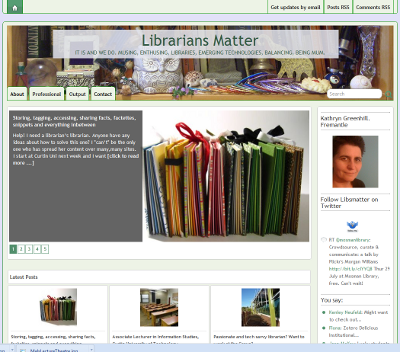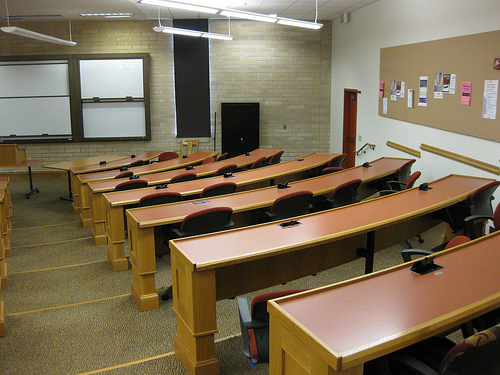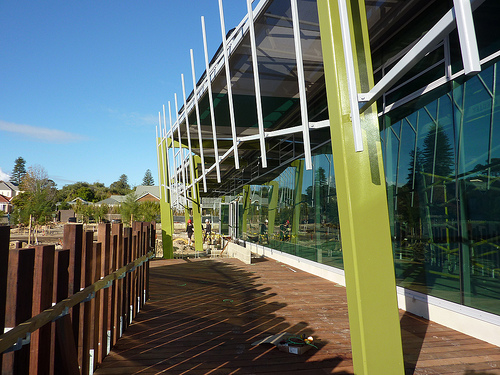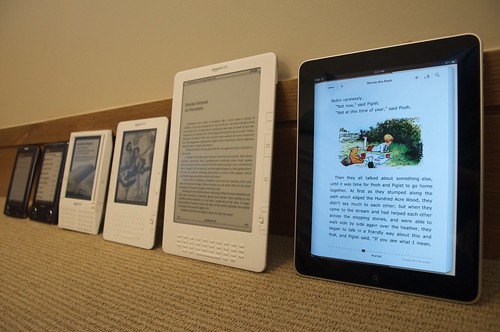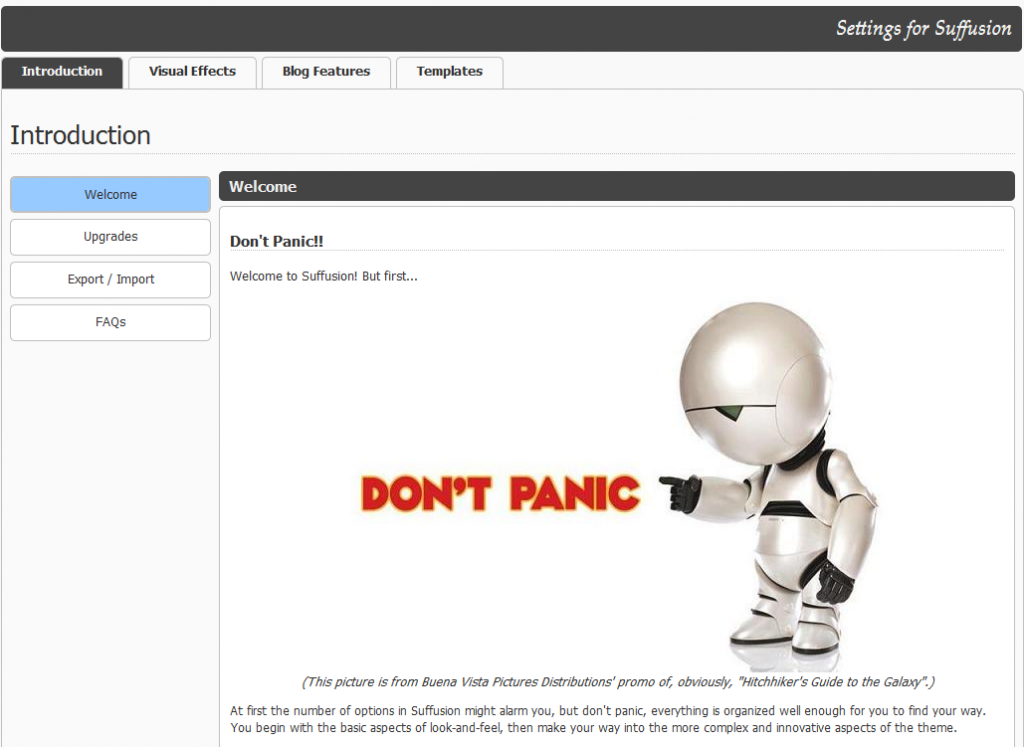A couple of months ago, a group of librarians where I work came up with a Digital Strategy to guide our use of resources and help us make decisions in the future. We are a single-branch public library, employing around 4.5FTE librarians, that aims to provide a service to match the cutting-edge design of our new library building.
We sourced quite a bit of the wording from other libraries’ digital strategies, but adapted it for our library. Our internal document has a huge list of action items and a timeline and allocation of responsibilities. Anything that went on the action list needed to be related to achieving one of the digital strategy’s aims.
What would you add? What would you take out?
ONE PAGE EXECUTIVE SUMMARY
WHY A TECHNOLOGY AND DIGITAL STRATEGY?
Libraries assist people to develop the capability and skills to thrive in the digital environment and to participate in the digital economy.
Digital technology offers opportunities to change the way that users interact with our library. We will ensure that we use this technology to responsibly and sustainably meet user needs – and aim to exceed their expectations.
The Library Technology and Digital Strategy provides guidelines about where to target library resources like funding, staff skills, time and energy in the areas of Information and Communications Technology (ICT), digital resources and the library’s online presence.
VISION
This strategy supports the Library Vision Statement that : We strive to be a vibrant, active service that contributes to an educated, informed, recreated and connected society.
The Technology and Digital Strategy Vision Statement is that:
Our library users will be empowered, connected and delighted as we provide facilities, content and expertise to help them access the content and online conversations they need, regardless of format or location.
AIMS
AIM 1: Taking advantage of improvements to technology
We will aim to ensure that we understand technological changes and the social changes brought about by these. We will nimbly and appropriately incorporate these to enhance the library experience for our users.
AIM 2: Excellent online presence
The library online presence will enhance our users’ ability to easily connect to the content and online conversations they need. Our online presence will highlight our specialised collecting areas.
AIM 3: Creating a new digital experience for all users
We will support lifelong learning and help our users to develop the capability and skills to thrive in the digital environment.
AIM 4: Making staff skills accessible
Our excellent staff skills in connecting people with information shall be easily accessible, both inside and outside our building.
AIM 5: Providing access to local digital content
We will continue to digitize local content to create a focused library collection. We will connect users to digital content produced locally and about local affairs.
AIM 6: Investing in ICT infrastructure
We will invest in infrastructure that not only supports current services, but allows the library to adapt to future shifts in technology and use
FULL VERSION
1. WHY A TECHNOLOGY AND DIGITAL STRATEGY?
Libraries assist people to develop the capability and skills to thrive in the digital environment and to participate in the digital economy.
Digital technology offers opportunities to change the way that users interact with our library. We will ensure that we use this technology to responsibly and sustainably meet user needs – and aim to exceed their expectations.
The Technology and Digital Strategy provides guidelines about where to target library resources of time, money, staffing and energy in the areas of:
· Library Information and Communications Technology (ICT)
· Computing infrastructure in our building
· The library’s online presence
· Library community requirements for computing and online resources from the library
· Equity of access to computing and online resources for all members of our community
· Maximizing usage of online resources provided by the library
· Connecting people to local information online
· Connecting local people to online information that they need
2. SUPPORTING THE LIBRARY VISION
The Technology and Digital Strategy supports the Library Vision Statement that:
We strive to be a vibrant, active service that contributes to an educated, informed, recreated and connected society.
Specific areas of the detailed Library Vision Statement supported are:
The new library and community centre will be a people place, which will be:
· … Facilitate life-long-learning through the provision of spaces and resources to create a learning environment; …
· Resourced with up to date technologies to promote a virtual environment to library customers, provide access to computing facilities and computer training programmes….
· An attractive and accessible environment for people of all ages;…
· A safe environment for staff with functional work stations to promote efficient work flows….
· A community hub connecting people to their communities…
3. TECHNOLOGY AND DIGITAL STRATEGY VISION
Our library users will be empowered, connected and delighted as we provide facilities, content and expertise to help them access the content and online conversations they need, regardless of format or location.
4. AIMS OF THE TECHNOLOGY AND DIGITAL STRATEGY
AIM 1: Taking advantage of improvements to technology
We will aim to ensure that we understand technological changes and the social changes brought about by these. We will nimbly and appropriately incorporate these to enhance the library experience for our users.
Some aspects we will monitor are:
o Access devices
o Content locations
o Content creation
o Ways of connecting communities
o Ideas about transliteracy
We will ensure that our enterprise application systems increase our staff efficiency, are sufficiently functional and are as easy to use as possible.
AIM 2: Creating an excellent online presence
The library online presence will enhance our users’ ability to easily connect to the content and online conversations they need. Our online presence will highlight our specialised collecting areas
AIM 3: Creating a new digital experience for all users
We will support lifelong learning and help our users to develop the capability and skills to thrive in the digital environment.
AIM 4: Making staff skills accessible
Our excellent staff skills in connecting people with information shall be easy accessible, both inside and outside our building.
Staff expertise will be easily found online and effectively meet our users’ needs.
We will ensure that our staff understand the digital environment of our users and the most useful sites for their needs by:
o providing appropriate training
o providing appropriate equipment
o encouraging wide and responsible use of online resources by staff.
Library staff expertise includes helping users to:
o Learn the best places to find information
o Ask better questions to find exactly what they need
o Find more of the content they enjoy
o Acquire skills in functional information literacy
o Connect with each other and their communities
o Let us know what services we should provide
AIM 5: Providing access to local digital content
We will continue to digitize local content to create a focused library collection. We will connect users to digital content produced locally and about local affairs.
We will seek to expose data we produce to the widest amount of access and appropriate reuse online, while respecting and upholding the moral and intellectual property rights of content producers whose works we digitise.
We will acknowledge that the local digital content in the library is a living collection that belongs to the community and will only thrive with hands-on input from the community. Therefore, we will ensure adequate resources to encourage, support and administer volunteers to do this.
We will work with our local community to help them gain skills to digitize their own local content
AIM 6: Investing in ICT infrastructure
We will invest in infrastructure that not only supports current services, but allows the library to adapt to future shifts in technology and use

